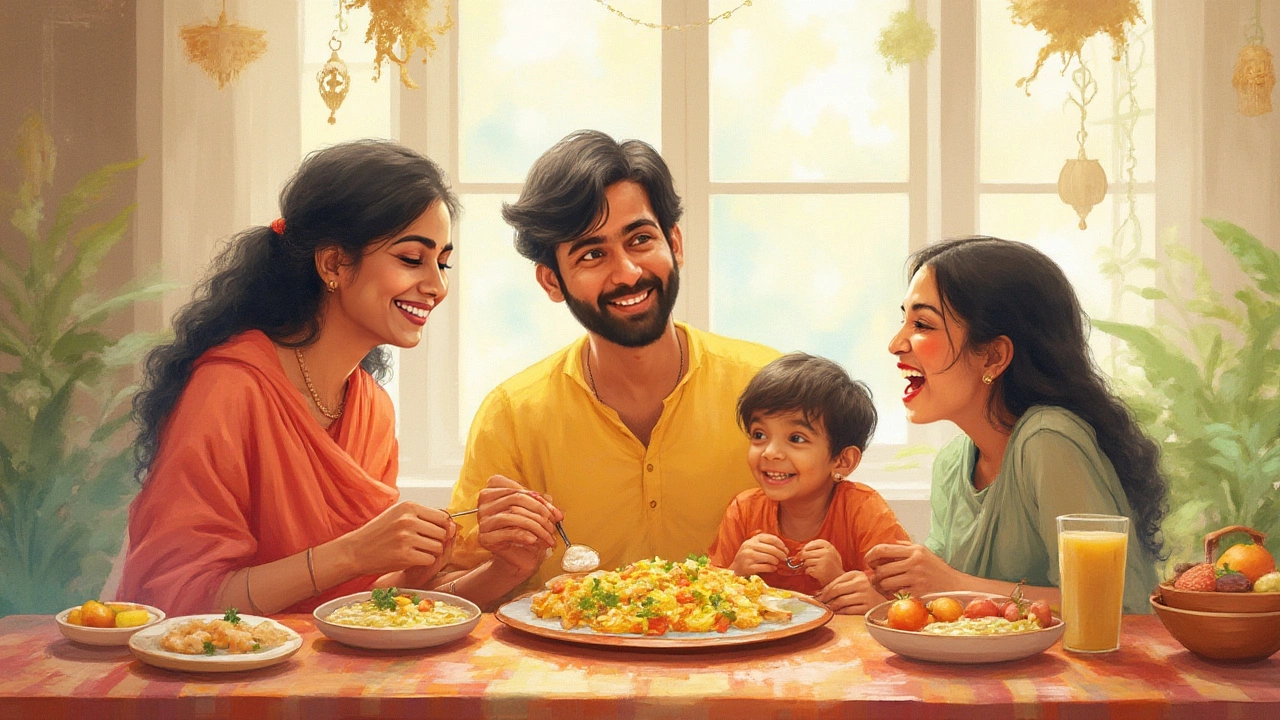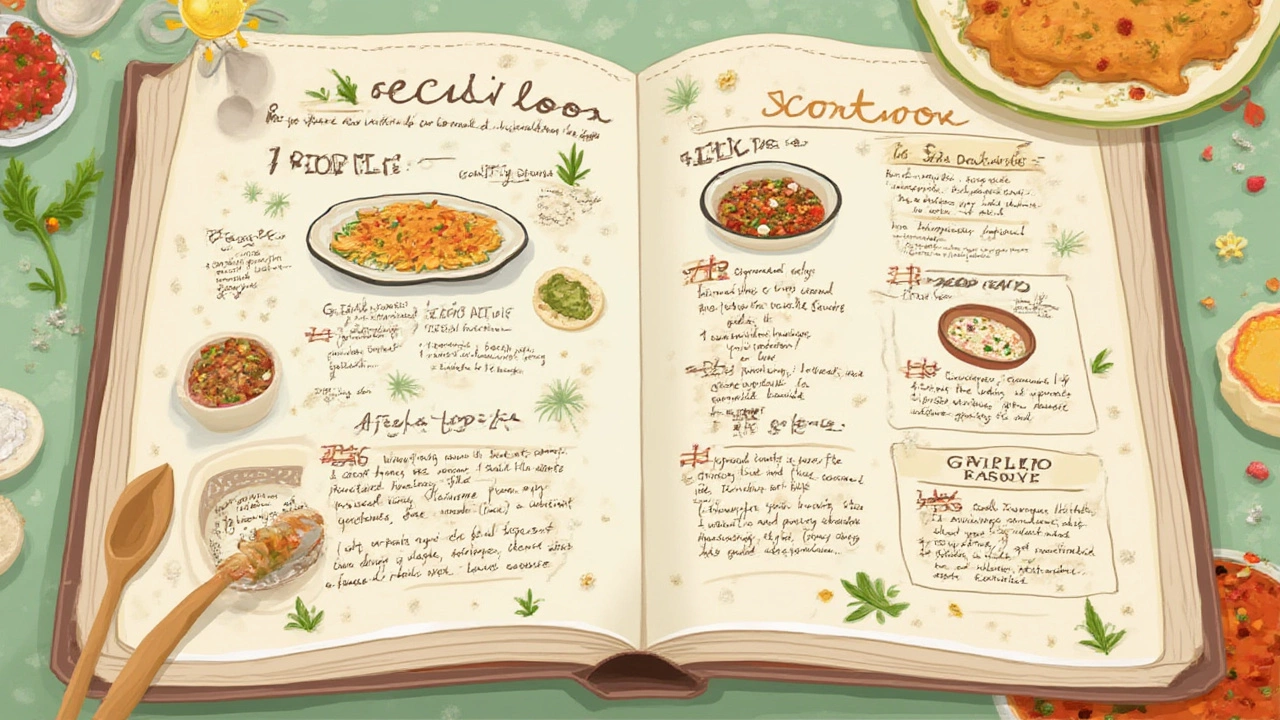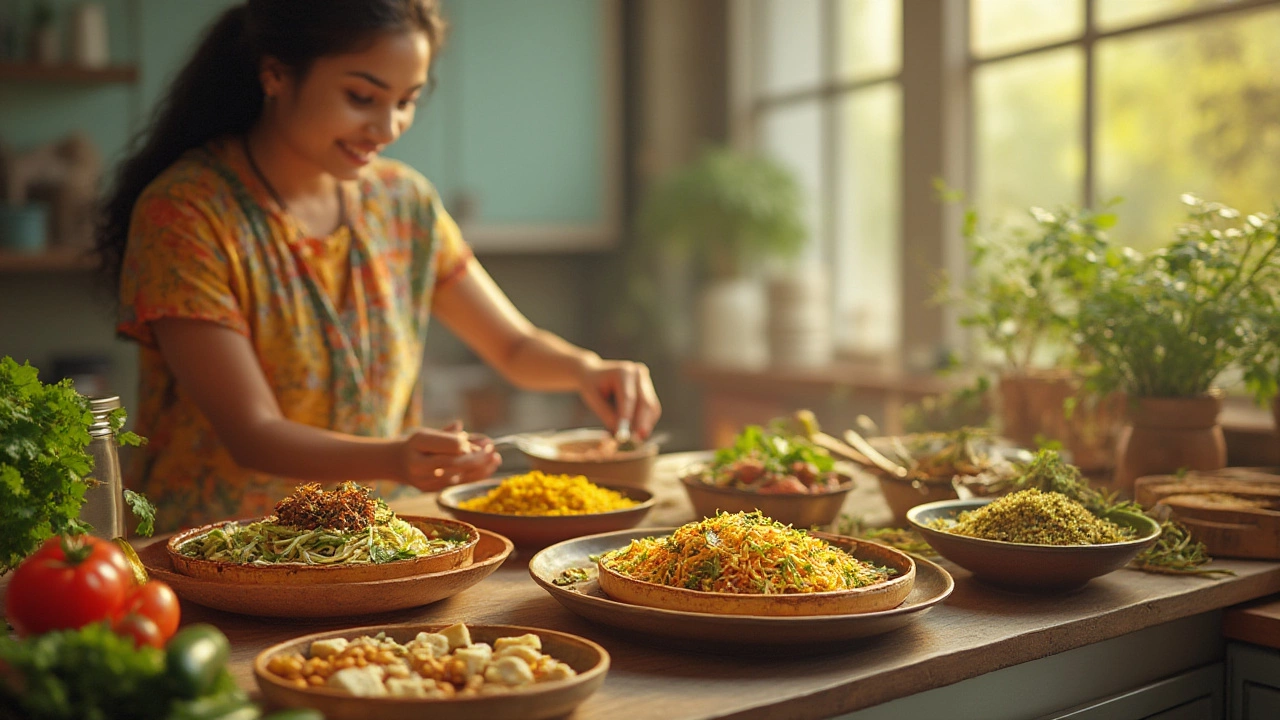You can’t scroll Instagram these days without running into plates loaded with buttery naan, creamy curries, and that magical, melt-in-your-mouth gulab jamun. But here’s a little secret: Indian food doesn’t have to mean instant food coma or squeezing those jeans a little tighter. Turns out, some of the healthiest, lightest, and most satisfying meals come straight from our very own kitchens—no fancy imported ingredients, diet trends, or bland salads required.
Unveiling the Least Fattening Indian Dishes
Let’s address the big question circling your mind: What’s actually the least fattening Indian dish? Sorry, there’s no one-size-fits-all answer (and don’t trust anyone who claims otherwise). Whether you’re dreaming of something comforting or looking to satisfy a party crowd, the actual calorie-light stars of Indian cuisine hide in plain sight: dals, chaats made with chickpeas, sprout salads, tandoori vegetables, and steamed delights like idli. Most of our "fattening" reputation is thanks to the extra ghee, frying, or creamy add-ons—not the spices or main ingredients themselves.
Take dal (lentil soup), for example. A classic moong dal (yellow split lentil) is loaded with protein and, when cooked with minimal oil, weighs in at just 128 calories per serving (about a cup). Pair it with a small portion of brown rice or whole wheat roti, and you get full faster while still keeping your calorie count low. Did you know moong dal contains about 24 grams of protein per 100 grams? That’s muscle food right there—perfect for folks who worry about not getting enough protein on a mostly plant-based diet.
Sprout salads are also unsung heroes. Mung bean sprouts, chopped tomatoes, cucumber, a sprinkle of chaat masala, and a dash of lemon juice—boom, you’ve got a nutrient-packed, barely-100-calorie snack that actually feels like food, not rabbit feed. A single serving (about a cup) brings in less than 1 gram of fat but supplies plenty of fiber (4 grams) and plant-based iron.
Let’s talk about steaming—this humble technique has saved my marriage. My husband, Rohan, loves his medu vada deep-fried, but swap that out for soft, fluffy idlis, and no one feels deprived (also, bonus points for my skin). Made from rice and urad dal, a single idli is about 35-40 calories and virtually fat-free unless you top it with too much butter or ghee. Team it up with sambar (without heavy tempering of oil) and coconut chutney (in moderation), and you have a genuine, filling breakfast that doesn’t overload you on fat. So, if you thought only oats or boiled eggs could keep you light, think again.
Tandoori options are another goldmine. Grilled tandoori chicken (without the creamy marinade) contains less than half the calories of a chicken curry with the same weight. Tandoori gobi or paneer can be even lighter—if you opt for low-fat paneer—and turn out smoky, tangy, satisfying, and definitely not greasy. The magic? The yogurt-based marinade, spice rubs, and the high heat of the tandoor oven (or even your regular grill, which works fine at home). Here’s a quick stat: 100 grams of tandoori chicken tends to have around 170 calories and 6 grams of fat, as compared to butter chicken’s 430 calories and 28 grams of fat for the same amount. See the difference?
Of course, eating light isn’t just about picking "the right dish." It’s about the swaps and tweaks. Think baked samosas instead of fried, roti instead of paratha, and dahi-based gravies instead of cream or coconut milk. Even your favorite Rajma or Chole, usually seen as "heavy," can be made with almost zero oil—and yes, they still taste like mom made them. The trick is to let the spices do their job and hold back on the heavy hands with oil and butter.

Calories, Myths, and the Surprising Truth About Indian Food
Let’s be real—there’s a lot of confusion (borderline drama) around Indian food and calories. People from outside India often imagine every meal as a greasy, over-the-top, sauce-laden affair. Even within India, there’s this belief that rajma-chawal, pav bhaji, or halwa spells diet doom. Truth usually sits somewhere in the middle.
Indian home cooks have created balanced, nourishing food for centuries. What actually sneaks in the calories? It’s the restaurant-style cooking—think extra oil for taste, generous ghee, and portion sizes that could feed an army. At home, my mom’s rajma was always a light, tangy stew (sometimes even with a hint of raw mango in place of tomato for a health kick), and everyone polished off their plates guilt-free. Most of the calorie hit comes from restaurant tricks: cream in the daal makhani, butter on naans, and that extra swirl of ghee over everything. Cook the same dish with less fat, and you suddenly realize Indian food can slip right into a low-calorie diet.
Now, let’s check out some real numbers. Here’s a snapshot of popular Indian dishes and their average calorie count per standard serving, based on trusted nutrition databases:
| Dish | Calories | Fat (g) | Protein (g) |
|---|---|---|---|
| Plain Idli (1 piece) | 39 | 0.2 | 1.6 |
| Moong Dal (1 cup cooked) | 128 | 1 | 10 |
| Tandoori Chicken (100g) | 170 | 6 | 22 |
| Sprout Salad (1 cup) | 95 | 0.5 | 6 |
| Palak Soup (1 cup) | 70 | 2 | 3 |
| Bhindi Sabzi (100g) | 87 | 3 | 2 |
| Chickpea Chaat (1 cup) | 120 | 2 | 8 |
The takeaway? Almost every "day-to-day" sabzi, dal, or snack (as long as you stay away from deep-frying) fits beautifully into a calorie-restricted meal plan. Bonus tip: Portion control is magic—but you didn’t need a complicated app to tell you that. Just serve food in a smaller katori (bowl), and suddenly, you’re basically eating restaurant "side dish" portions, which most of us already do at home anyway.
One more myth to smash: Indian bread is not the bad guy. Yes, naan and paratha (with all that butter) can tip the scales, but a plain phulka or chapati is only about 70-80 calories per piece. Stack your meal with sabzi and dal, keeping bread for taste rather than bulk, and it’s easy to keep things light. I usually skip the rice at dinner in favor of an extra serving of sabzi—it keeps me full and helps with a good night’s sleep.

Tips, Tricks, and Tasty Hacks for Healthy Indian Eating
If you want to keep things light without giving up big flavors, it comes down to these: cooking style, smart swaps, and spices. One underrated trick? Use a non-stick pan. You don’t have to drown onions and tomatoes in oil for that infamous "bhuna" texture. Dry roast your basic spices for flavor bombs, then finish veggies or dal with just a teaspoon or less of oil at the end. I keep a tiny oil sprayer on my kitchen counter for an exact hit of flavor, without the guilt.
Let’s talk alternative flours. Bajra (pearl millet) or jowar (sorghum) rotis are less calorie-dense than regular wheat and have a nice "bite" to them. If you love parathas, fill them with spiced veggies or paneer, brush only a teaspoon of ghee, and use whole wheat flour. Your taste buds probably won’t catch the downgrade in richness, but your waistline definitely will.
Want to satisfy a snack craving? Skip pakodas and reach for roasted chana, homemade bhel (use puffed rice, chopped tomatoes, coriander, and a lemony dressing), or even fresh fruit chaat spiced with black pepper and kala namak (black salt). When guests pop in, I toss together steamed corn chaat with diced capsicum and cucumber—it vanishes in minutes, and no one remembers there was no cheese or mayo in sight.
Don’t underestimate a microwave or air fryer either. Samosas or kachoris (yes, seriously!) can be stuffed with lightly spiced potatoes or lentils, brushed with a little oil, and baked or air-fried until golden. You get the crunch and the flavor minus the heaviness that usually comes from deep frying. I've tricked Rohan more than once with these “accidentally healthy” versions, and he still hasn’t caught on.
Here’s a quick guide that might help you make better choices—if you’re out at a restaurant or ordering in:
- Steamed (idli, dhokla, momos) always beats deep-fried (vada, samosa, bhajiya).
- Grilled (tandoori chicken/fish, vegetables) is lighter than creamy curries.
- Choose whole moong or chana salads over fried chaats.
- Opt for tomato or yogurt-based sauces, not cream- or coconut-based gravies.
- Pick chapati/phulka over naan or paratha for fewer calories and less fat.
- Always watch the portion size, especially at buffets—ask for half-portions where possible.
- If you must have dessert, fresh fruit, rasgulla, or shrikhand can be lighter than gulab jamun or jalebi.
Spices also help. Did you know that chili, ginger, and garlic not only amp up taste but can help with digestion and metabolism? There’s real science here: capsaicin from chilies can boost metabolism slightly, while ginger’s zing aids in digesting heavier meals. So, go ahead and add that “tadka”—it’s not just tradition talking, but nutrition too!
One last bit: don’t make healthy eating a punishment. Indian food was always about balance. A light dal, fresh sabzi, a small helping of rice or roti, and maybe a spoon of homemade achar (pickles)—that’s a daily joy, not a compromise. I listen to my cravings, indulge mindfully, and trust that as long as I don’t make ghee my main course, I’m doing just fine.
If you ever worry that "least fattening" means dull, you haven’t raided your spice box enough. Trust me, there’s more magic simmering in a basic bowl of *dal* or a bright sprout chaat than you’ll ever find in the latest diet drink. Invite color, crunch, and tang into your meals, keep oil to a happy minimum, and enjoy every bite! That’s the Indian way—and the most delicious road to feeling lighter.
